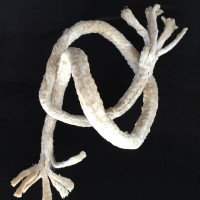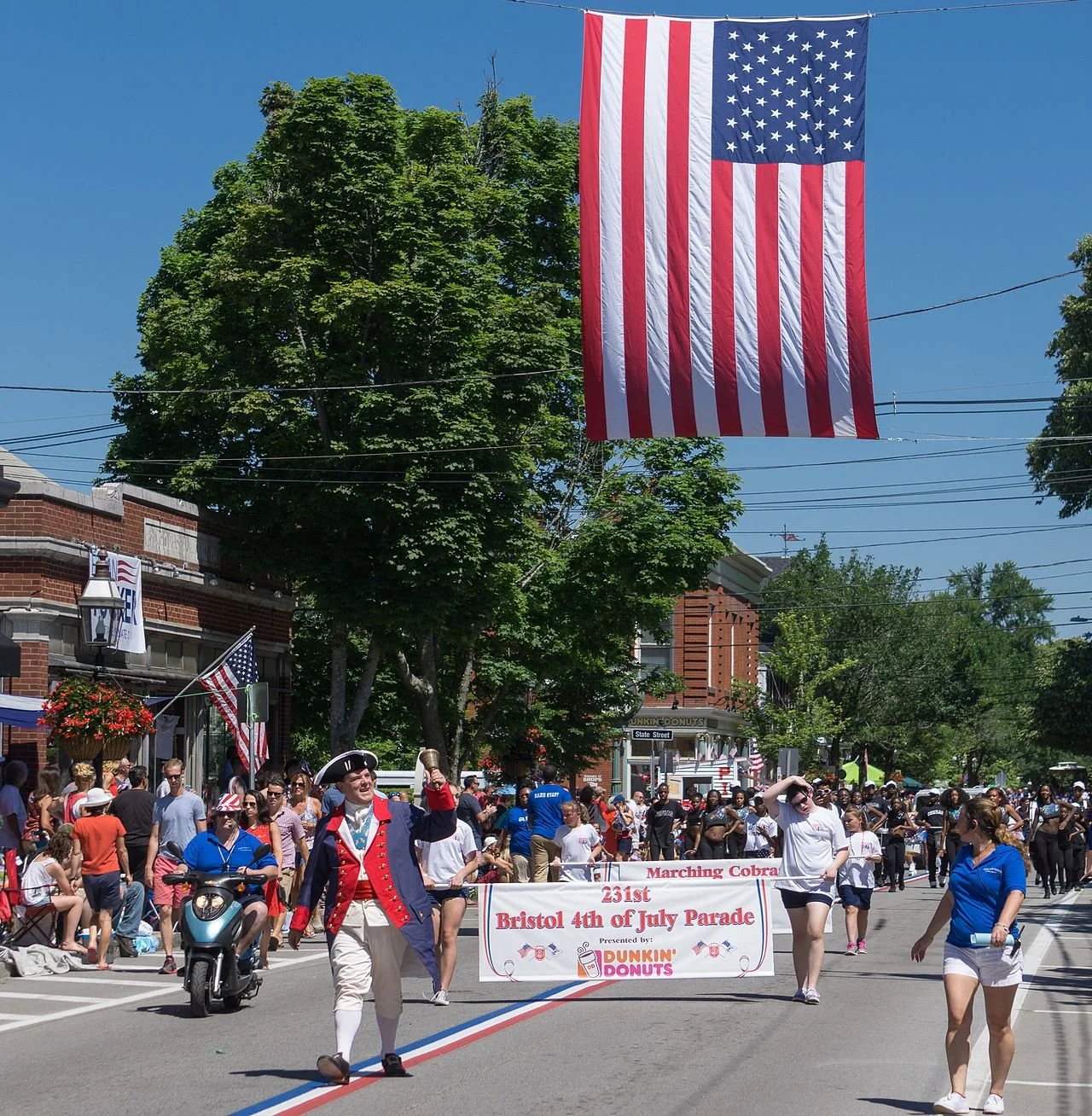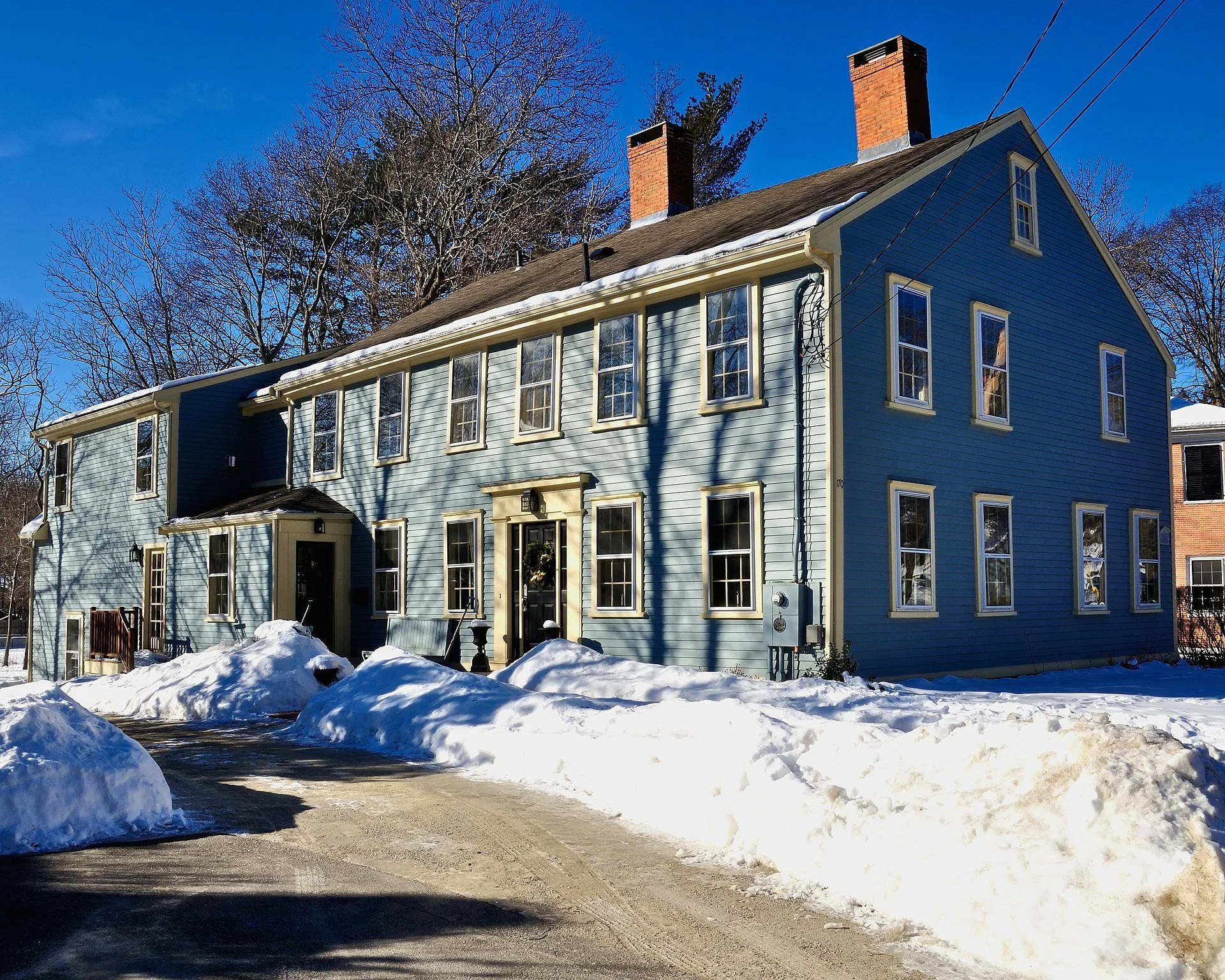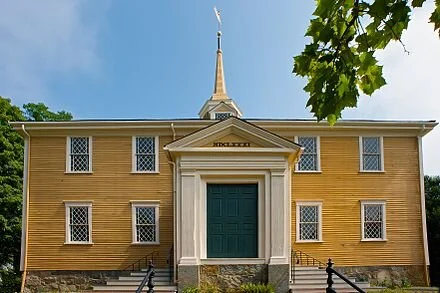
After awakening from a trance
“Free Association” (Encaustiflex, wax, silver pigment), by Bristol, R.I.- based Leila Stokes Weinstein
She explains:
“My process is a combination of working on an idea that I want to express or just playing with materials, allowing my subconscious to make the decisions.The later is fun because suddenly I ‘awaken’ from a sort of trance or meditation, a place of no thought, to find something pleasing has been created.
''The three-dimensional capability of wax calls to me, whether it is a buildup of layers on a panel or embedded objects in a sculptural piece.
"Like most of the world, I am very concerned about the degradation of our planet and the rapid extinction of wild plants and animals, so my work often reflects on that and the beauty of nature around us.
"My work usually incorporates visual movement. The flow of water, the lapping of waves and the blur between land, water and air call to me.’’
Her bio:
Lelia Stokes Weinstein was raised as a Quaker. She was taught that there was good in everyone. In her art she explores joy, hope and peace. As a small child she loved to do art and was allowed to go to art classes in Cambridge at the age of 9. The experience of commuting for 2 hours by herself from the World’s End section of Hingham, Mass., helped further develop an independent and adventurous spirit.
She went to Friends World College, which required study abroad in at least two countries. Living in India and traveling overland to England through Afghanistan, Iran and Turkey she discovered the vibrancy of these cultures and how they embraced color and texture.
A misty morning in the Hingham, Mass., peninsula called World’s End
The front of the 231st Bristol, R.I., Fourth of July Parade in 2016.
— Photo by Kenneth C. Zirkel
‘Great equality’ in Mass. in 1789
Samuel Lincoln House, in Hingham, Mass., built on land purchased in 1649 by Samuel Lincoln, an ancestor of Abraham Lincoln
" There is a great equality in the people of this state.
Few or no opulent men, no poor. Great similitude in their buildings, the general fashion of which is a chimney (always of brick or stone), and door in the middle, with a staircase fronting the latter; two flush stories with a very good show of sash and glass windows; the size generally from 30 to 50 feet in length, and from 20 to 30 in width, exclusive of back shed, which seems to be added as the family increases.’’
— George Washington, in his journal of his tour of Massachusetts in 1789
Calm down, old boy!
The north-central Pioneer Valley in South Deerfield, Mass.
— Photo by Tom Walsh
“Massachusetts! A word surrounded with an aura of hope! A state with a soul! There is gathered up into her name the brilliant program of a new world.’’
— Wallace Nutting, in Massachusetts Beautiful (1923)
Built in 1681, the Old Ship Church, in Hingham, Mass., is the oldest church in America in continuous ecclesiastical use. Massachusetts has since become one of the most irreligious states in the U.S. It was built by Puritans, then was Congregational and now is Unitarian-Universalist.
The real Puritans
Quaker Mary Dyer led to execution on Boston Common, on June 1, 1660, by an unknown 19th Century artist. The Puritans denounced Quakerism from the start.
Adapted from Robert Whitcomb’s “Digital Diary,’’ in GoLocal24.com
Sarah Vowell’s chatty (and sometimes a tad vaudevillian and snarky) and well-researched book The Wordy Shipmates is a remarkable combination of drollery and serious, if popular, historical writing. She gets into the heads of the New England Puritans, some of whom were brilliant, such as John Winthrop, Roger Williams and Anne Hutchinson, and virtually all of whom were literate and wrote a lot, and analyzes how their actions and beliefs help lay the religious, civic and political foundation of what became the United States. Indeed, as the late Anglo-American journalist Alistair Cooke once observed, “New England invented America.’’
She says in the book that “the most important reason I am concentrating on {Massachusetts Bay Colony leader John} Winthrop and his shipmates in the 1630’s is that the country I live in is haunted by the Puritans’ vision of themselves as God’s chosen people, as a beacon of righteousness that all others are to admire.’’
But in Winthrop’s famous and sometimes misquoted and misunderstood line, the colony would be "as a city upon a hill, the eyes of all people are upon us,’’ he was warning that its members would be judged for how they lived there. And he never called that city “shining.’’
Her book is a very entertaining place to start to learn about the creation of New England and the myths and facts around it. Then you can go and read the much more scholarly work of such academic historians of the region as Harvard’s brilliant Perry Miller (1905-1963).
My father’s ancestors were Massachusetts Bay Puritans, though some fairly early on became Quakers and then were advised to get out of town fast. My only physical things from 17th Century New England and Olde England are some musty religious tracts, which those characters cranked out in large numbers. Worth little but useful reminders of how far away, and near, those people were.
Interior of the Old Ship Church, built in 1681 as a Puritan meetinghouse in Hingham, Mass. Puritans were Calvinists, so their churches were unadorned and plain. It is the oldest building in continuous ecclesiastical use in the United States and today serves a congregation of Unitarian Universalists, whose theology Puritans would have condemned. But Unitarianism evolved from the Puritans via Congregationalism.
Dissatisfied religionists
— Photo by Tim Valentine
The Old Ship Church (also called the Old Ship Meetinghouse) is a Puritan church built in 1681 in Hingham, Mass. It is the only surviving 17th-Century Puritan meetinghouse in America. Its congregation, gathered in 1635 and officially the First Parish in Hingham, occupies the oldest church building in continuous religious use in the United States.
The New York Times called it "the oldest continuously worshiped-in church in North America and the only surviving example in this country of the English Gothic style of the 17th Century. The more familiar delicately spired white Colonial churches of New England would not be built for more than half a century."
Within the church, the ceiling, made of great oak beams, looks like the inverted frame of a ship — thus the church’s name.
From the Unitarian-Universalist World:
“The people who colonized Hingham were eager to get as far away from the influence of the Puritans in the Massachusetts Bay Colony as they could, so they settled in Hingham, twenty miles south of Boston. Ebenezer Gay, who served as the congregation's pastor from 1718 to 1787, rejected Calvinism in favor of Arminianism, the precursor of American Unitarianism. By the end of the eighteenth century, the congregation was essentially Unitarian, according to the Rev. Ken Read–Brown, the church's minister for the last twenty years.’’
New England has a great many houses of worship, at least in part because it was settled by people who were unhappy with the Church of England, or with Rome, or with Martin Luther; or who simply had a scheme of their own they wanted to try out — usually having to do with wearing black clothes and making sure everyone behaved.
From Contemporary New England Stories (1992), by C. Michael Curtis
Looks like the quintessence of late November
"Morning Fog, Land's End'' (on the coast of Hingham, Mass.) by Russell duPont. Copyright Russ duPont Photographs.
I have long felt that Russell duPont is one of the greatest photographers in the history of New England -- Robert Whitcomb
Linda Gasparello: A Mass. man in full
Ralph Marcy Gasparello
This is about my father, Ralph Marcy Gasparello, who died on July 11, aged 88. He was a stalwart resident of Hingham, Mass. Indeed, he often boasted about his status as “maybe the longest resident” of the town.
He had many opportunities to leave Hingham, especially after the death of his wife, Joan, in 2005. But he loved the town and their elm tree-canopied house -- which he largely built -- and where he raised four daughters and a son.
He and his wife were players in that championship season of residents who moved to Hingham in the early 1950s, and contributed to the desirability that it has today as a South Shore town. The young married couple supported the town's planning, enlarging its schools and raising the educational standards (particularly Wilder Memorial Nursery School and South Elementary School), and the building of the new Hingham Public Library.
He was a Massachusetts man through and through. He grew up in and around Boston, but mostly in Malden. He attended Boston Latin and other schools before graduating from Malden High School, in 1945. He was president of his high school class, and captain of its football team.
His athleticism won him a place on the football team of Cornell University, where he attended its famed school of hotel administration on an ROTC scholarship, and graduated in 1951, after completing his Army service. He married Cornell alumna Joan Rita Circola, of Brooklyn, N.Y., in 1952 at the university's Our Lady Chapel. They moved to Hingham in 1953.
He had a natural talent for public speaking, which caught the attention of his professors at the hotel school. While he was recruited by the Armstrong Cork Co. upon graduation, a speech that he gave on self-employment in a business class at Cornell sold him on that path in life.
When he and his wife moved to Hingham in 1953, he was working as a meat broker in Boston, having learned the business from a family member. He had a knack for sales because he liked to talk and listen to people: a skill honed during his days as a bartender at Cornell's Statler Club, where he learned to make his signature Negroni cocktail.
He stayed in the meat-brokerage business for more than three decades, until Iowa Beef Processors irrevocably changed the playbook for meat brokers in Boston in the 1980s.
A love for travel and languages – he spoke restaurant menu-level French, Italian and Spanish, which he and his wife studied at night for years at Hingham High School – led him to form an association for senior travel planners in 1985. He, his wife and his son, Ralph Jr., ran the National Association for Senior Travel Planners, and built it to 50,000 members before its dissolution, in 2001.
Through the association, he and his wife traveled widely. They enjoyed the business, and he especially enjoyed his public speaking – and even singing – opportunities during their Senior Travel Days shows. After his wife's death, he continued speaking in public – to those who attended the book lectures that he sponsored at the Hingham Public Library in memory of his wife, and to UBS investors forums.
His message to these and any audience -- of one or many -- was always positive. As he once said, quoting actress Audrey Hepburn, “Nothing is impossible, the word itself says 'I'm possible.'”
He had wide interests, including an abiding one in his college alma mater. He and his wife were active participants in the Cornell Club of Boston and Cape Cod. For years, they interviewed prospective students from the South Shore.
His appreciation of music was passionate and all-genre – from Big Band to bluegrass to salsa and classical. It never dimmed, even though his hearing did in his final decade.
He was a natural athlete and could do anything with a ball, and watch any sport. He could cane chairs, which was his way of passing long New England winters. “I like to be busy,” he used to say.
He was a reader and relished discussions of domestic and foreign affairs. He wrote poetry.
He was an accomplished cook, especially Italian food, and loved to “get dirt under his nails” (as did his father) in the gardens in his homes in Hingham and on Nantucket Island.
He was Big Ralph to his family and friends. He was tall in stature and big in his love of life and this world. He had a big heart, which finally failed and took him from us.
He is survived by three daughters and a son, Linda Gasparello, of West Warwick, R.I., Lisa Holt, of Newburyport, Mass., Nina Moore, of San Francisco, and Ralph Jr., of Merrick, N.Y., their spouses and seven grandchildren -- who called him Pops -- and other relatives. His daughter Paula Jordan, of Belton, Texas, died in 2012.
A private family memorial ceremony will he held on Nantucket Island.
Linda Gasparello is co-host of White House Chronicle, on PBS.










